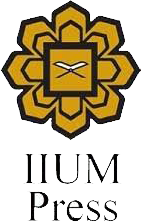ENERGY AUDIT OF A TEXTILE MILL – A CASE STUDY
DOI:
https://doi.org/10.31436/iiumej.v17i1.561Abstract
The textile industry plays a pivotal role in Pakistan’s economy. The industry‘s share for overall manufacturing activity is 46%; in the export sector it is 68%; in value addition it is 9% of GDP and in providing employment it is 38%, in addition to the foreign exchange earnings, investment and contribution to the value added industry. In spite of this major contribution, the textile industry is at a severe risk due to hefty increases in energy costs. Keeping in view of these challenges in order to technically support the textile industry, energy audit of a textile mill ihas been carried out and areas of energy wastage are identified with an estimated cost saving of almost Rs. 6.8 million. Finally recommendations are given for cost effective measures for efficient energy usage, estimation of implementation costs and payback periods.
KEYWORDS: Â energy; audit; loss; consumption; economy
Downloads
Metrics
References
[2] Albert T. (1989) Plant engineers and managers guide to energy conservation, 4th edn. Fairmont Publishing.
[3] Hartungi R, Jiang L. (2012) Energy efficiency and conservation in an office building: A case Study. Intl. J. of Energy Sector Management. 6(2):175-188.
[4] McMullan JT, Morgan R. (2007) A device for recording electrical information. Intl. J. of Energy Res., 4(1):11-17.
[5] Balasubramanian P. (2004) Energy auditing made simple. Bala Consultancy Services, Mylapore, India.
[6] Chanda RS. (2014) On energy auditing: An experience with a jute mill. Intl. J. on Recent Innov. Trends Comp. Comm., 2(10):3134-3137.
[7] Chase J, Lucas NJD, Murgatroyd W, Wilkins BC. (2007) Industrial energy use-II: Energy use in a light engineering factory. Intl. J. of Energy Res., 2(4):375-388.
[8] Jouni K, Iikka S. (2001) Cleaner energy production in industrial recycling networks. Eco-Management and Auditing, 8(2):144-153.
[9] Virginia WJ, William SJ, Joann CJ. (2007) Impact of energy audits on home energy consumption. Intl. J. of Consumer Studies, 11(1):21-38.
[10] Paul OC. (1993) Energy management. McGraw-Hill Professional Publishing.
[11] Tyagi AK. (2000) Handbook on energy audits and management. TERI, India.
[12] Earle AP. (1985) A case history: Energy conservation in the primary textile industry in Canada. National Technical Conference of AATCC, pp. 215.
[13] Dhayaneswaran Y, Ashokkumar L. (2013) A study on energy conservation in textile industry. J. Inst. Eng. India Ser. B. 94(1):53-60. Doi: 10.1007/s40031-013-0040-5.
[14] Palanichamy C, Nadarajan C, Naveen P, Babu NS, Dhanalakshmi. (2001) Budget constrained energy conservation - An experience with a textile industry. IEEE Trans. Energy Conversion, 16(4):340-345.
[15] Prakasam R, Chandran KR. (2013) SITRA energy audits for textile mills. Textile Magazine, 44(8): p 69.
[16] Hasanbeigi A, Hasanabadi A, Abdorrazaghi M. (2011) Energy efficiency technologies and comparing the energy intensity in the textile industry. ACEEE Summer Study on Energy Efficiency in Industry, 1:34-46.
[17] Şekkeli M, Keçecioğlu OF. (2012) SCADA based energy saving approach to operation of stenter machine in a textile plant using waste heat recovery system. Journal of Textile & Apparel / Tekstil ve Konfeksiyon, 22(3):248-257.
[18] Masood A K, Muhammad S, Iftikhar S, Altaf H, Wasi U, Shabbir F. (2015) Energy efficiency in textile sector of Pakistan: Analysis of energy consumption of air-conditioning unit. Intl. J. of Env. Sci. Dev., 6(7): 1-11.
[19] http://www.ems-textile.net
[20] http://www.ptj.com.pk
[21] http://textilemagazine.awardspace.com






















